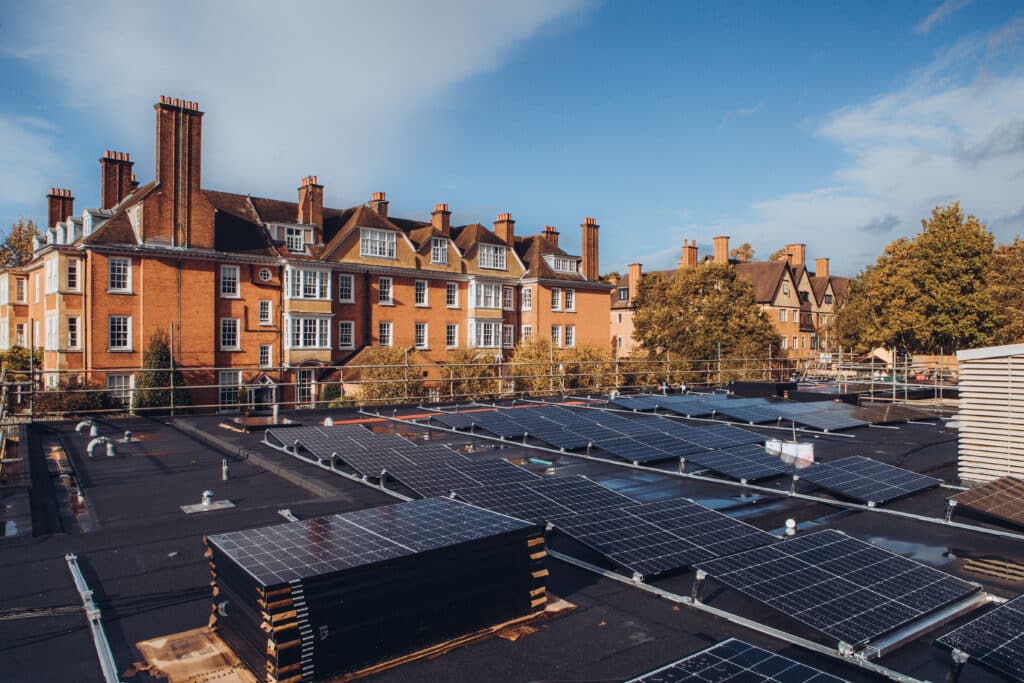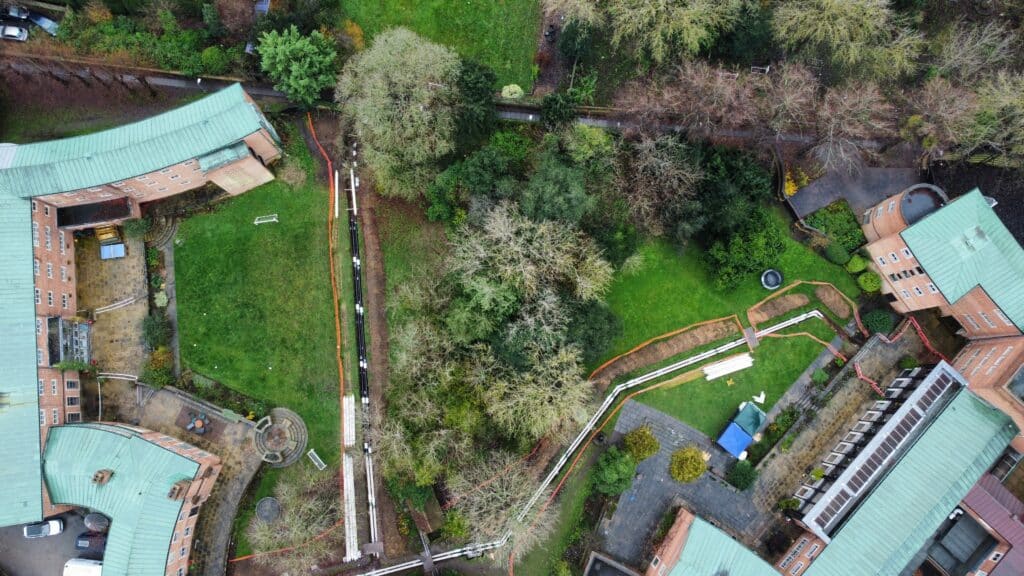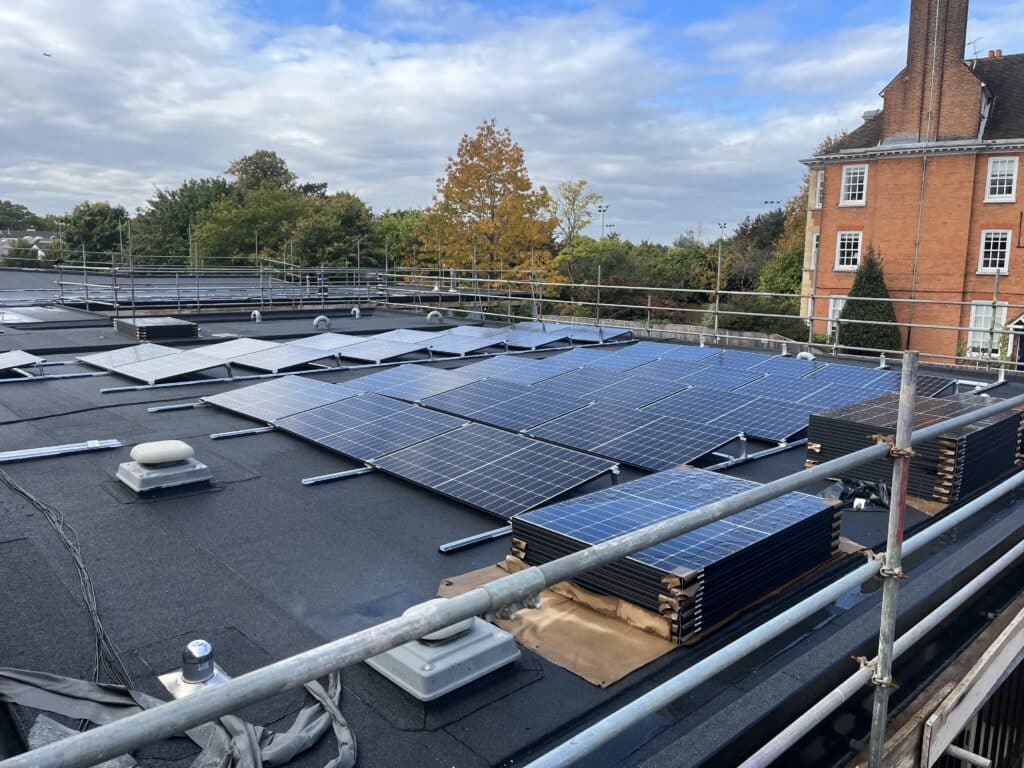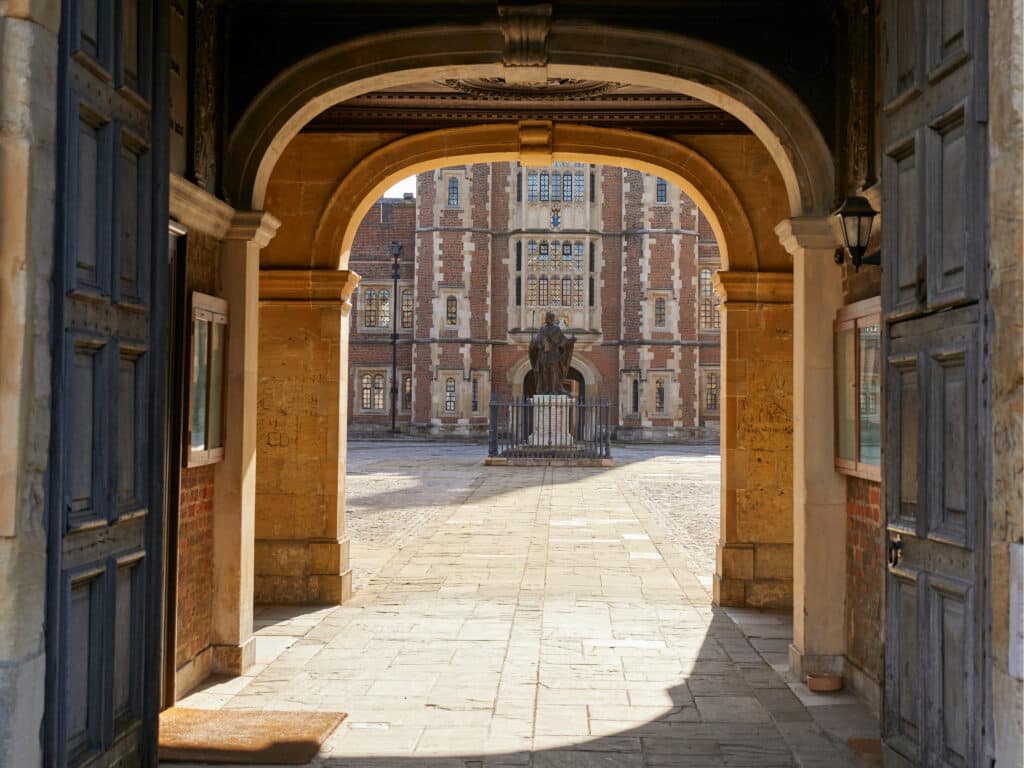Over recent months, the College has been delivering numerous projects to improve Eton’s infrastructure, lower our environmental impact and reduce energy costs. Buildings and Facilities Director, Chris Reeve, sat down with me to discuss current initiatives and future plans.
One of the obvious routes to reducing our environmental impact is to reduce our energy use. In this vein, the roof of Bekynton – the central dining room that provides breakfast, lunch, and supper for 11 of our 25 boarding Houses – has just been fitted with a large solar array spanning 180 individual panels. Mr Reeve said that, “As a result of Bekynton’s size and the many energy intensive appliances in use – such as fridges, freezers and electric ovens – the system will cover just 25% of Bekynton’s energy demands, but it will still save 16 tonnes of carbon dioxide emissions per year.”
Due to the weight of the panels, and because they make rooftop maintenance trickier, Bekynton’s roof was first repaired to ensure no issues existed before the installation of the panels.
Mr Reeve said: “This modern system is so simple, the only maintenance required is periodic cleaning of the panels and, combined with the newly repaired roof, no intervention should be needed for at least 25 years.”
The array is now one of three. The other two are situated on the roofs of Athens and Queen’s Schools but Mr Reeve said that the priority going forward would be addressing the most polluting and costly parts of Eton’s infrastructure – namely, the heating system. “Our project to renovate the College’s energy centres and breathe new life into the district heating system has made good progress,” he added.
Eton’s centralised district heating system, usually seen in large building complexes such as dense apartment developments, hospitals or airports, is more efficient than having individual boilers in each building.
This method has been gaining popularity in recent years, due to its environmental and cost saving credentials. The refurbishment of six of Eton’s seven energy centres has now been completed.
Boys may have been wondering why the area by Judy’s Passage – a narrow pedestrian pathway providing a convenient shortcut through the centre of the School – has been under construction for a while. Mr Reeve was aware that this made it look as though the work was unfinished but, in fact, two-thirds of the legacy pipework has now been replaced, with much of the work taking place in the gardens of Houses.
He said that “With the replacement of the 50-year-old underground pipes, we are working backwards from each building, with the pipes connecting up to the Penn Energy Centre by Judy’s Passage in the next few months.”
The benefits of this project are already being seen, with the College’s scope one emissions (greenhouse gases emitted from sources directly controlled by Eton) being reduced by as much as one-third.
Mr Reeve and his team have already had a busy start to the term, addressing the issues caused by the flooding and the Journal wishes the Buildings Department well as they continue to work on reducing Eton’s impact on the environment and ensuring its infrastructure is fit for purpose in 2024.






